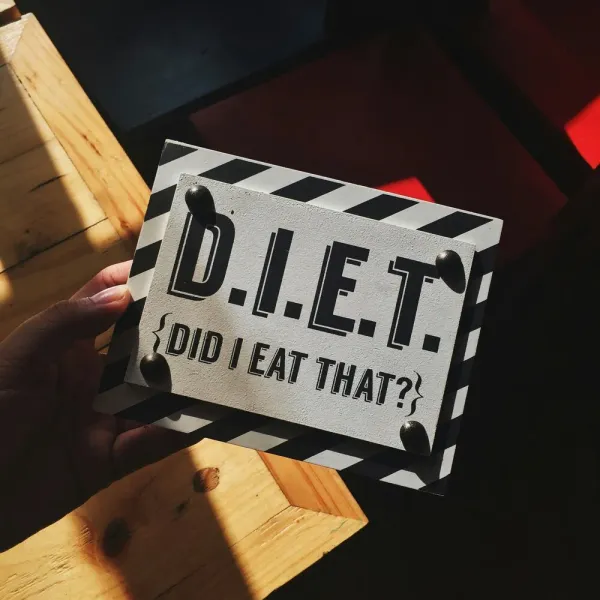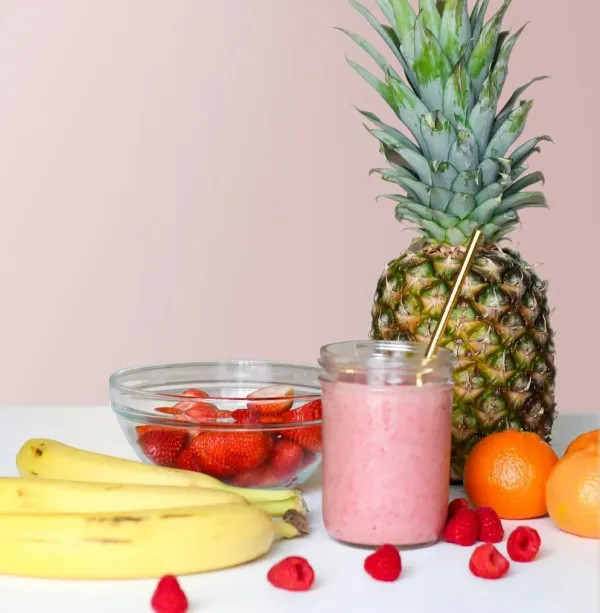Eat healthy food with FoodIntake AI calorie pal.

First and foremost is consistency. Just make a habit of eating less and avoid bad foods. Food logging and tracking might help to establish the habit and see general nutritional quality of your intakes.
There are 3 simple steps to start:
- Calculate your BMI to see do you really need to lose weight or not. Calculate your everyday energy requirement, BMI and calorie deficit needed to start loosing weight
- Install kcal counter to log regularly your food and meals and check how good you stick to macronutrient ranges on fats, carbohydrates and protein. Remember that your digestion likes simple sugars, vegetables and less saturated fats. FoodIntake app labels your food to indicate which food has bad nutritional quality and number ingredients (processing levels) which are hard to digest.
- Start exercising. The most obese people are those who have low activity levels and consume more energy then spend. Its proven that exercising helps to improve your metabolism and also you will be able to afford cheat days by the additional energy spending.
The first and most impactful thing you may do at the start is stop drinking soda and alcohol. You may consume them 1-2 days per two weeks in cheat days.
Body Mass Index (BMI)
The Body Mass Index (BMI) was created in the 1830s by Adolphe Quetelet, a Belgian mathematician and statistician. He developed BMI as part of his work in “social physics” to find a simple way to describe the average build of a population. Originally, it was called the Quetelet Index and was intended as a statistical tool rather than a medical standard.
BMI became widely used in medicine and public health only in the 1970s, when American researcher Ancel Keys promoted it as a convenient measure to assess obesity levels in populations.
Body Mass Index (BMI) is a numerical value derived from a person’s weight and height. It is commonly used as a screening tool to categorize individuals into different weight status groups, such as underweight, normal weight, overweight, and obesity.
- If your BMI is less than 18.5, it falls within the underweight range.
- If your BMI is 18.5 to 24.9, it falls within the Healthy Weight range.
- If your BMI is 25.0 to 29.9, it falls within the overweight range.
- If your BMI is 30.0 or higher, it falls within the obese range.
Is BMI a Good Metric to Follow?
BMI is useful as a general screening tool but has significant limitations when used for individuals.
✅ Strengths of BMI:
• Simple and Quick: Only requires height and weight.
• Useful for Large-Scale Studies: Works well to track obesity trends in populations.
• Moderate Correlation with Body Fat: In many cases, it provides a rough estimate of fat levels.
❌ Limitations of BMI:
1. Does Not Differentiate Between Fat and Muscle
• Athletes with high muscle mass may have a high BMI but low body fat.
• Elderly individuals with low muscle mass might have a “normal” BMI but high body fat.
2. Does Not Account for Fat Distribution
• Visceral fat (around organs) is more dangerous than subcutaneous fat, but BMI doesn’t consider this.
• Waist-to-height ratio is often a better predictor of metabolic risk.
3. Different Body Types and Ethnic Differences
• Some ethnic groups may have higher health risks at lower BMIs (e.g., Asians tend to have more body fat at a given BMI).
• People with different body compositions (e.g., wider hips, denser bones) may have misleading BMI values.
4. Not Always a Good Indicator of Health
• Some people with “normal” BMI can still have high body fat and metabolic issues (TOFI - Thin Outside, Fat Inside).
• Other metrics like body fat percentage, waist circumference, and metabolic markers (cholesterol, blood sugar, etc.) can be more accurate.
Better Alternatives to BMI
If you want a more accurate measure of health and body composition, consider:
• Body Fat Percentage (measured with DEXA scans or calipers)
• Waist-to-Height Ratio (waist <50% of height is ideal)
• Waist-to-Hip Ratio
• Metabolic health markers (blood tests for cholesterol, glucose, etc.)
BMI is useful for quick screening, but it’s not the best metric for individuals. If you’re tracking health, combine BMI with other indicators like waist measurements, fitness levels, and lab tests.
AI calorie pal
You may use calorie deficit calculator to get insight into how much you have to eat regularly and then lower this number to start losing weight to a healthy BMI range (Body Mass Index - weight in kilograms over squared height in meters):
- If your BMI is less than 18.5, it falls within the underweight range.
- If your BMI is 18.5 to 24.9, it falls within the Healthy Weight range.
- If your BMI is 25.0 to 29.9, it falls within the overweight range.
- If your BMI is 30.0 or higher, it falls within the obese range.
What is great about the FoodIntake calorie tracker is that it calculates all of this for you and you can adjust your weight and activity levels during your eating journeys to get a new minimum energy requirement with your adjusted calorie deficit for losing weight. Such a companion is important because everything related to your food consumption is in one place. The app gives you full control over your food choices and preferences without explicitly suggesting any diets but showing you healthy macronutrient ranges based on your biometrics. Sticking to the ranges is quite a complex task but you can start by ordering catering to get used to some new tastes and foods and see what a healthy menu usually looks like.
Use the FoodIntake calorie counter scanner to gain insights into the food you cook. By scanning QR codes on ingredients, you can ascertain how many components are processed and evaluate the nutritional quality of your food. If you don't cook yourself, start using the AI ingredients extractor to help understand the nutritional quality of your meals. Review the macronutrient quality labels of your food intake to better understand your dietary habits.
Install calorie and nutrient tracker
Its not just macro calculator with calories, it is also a recipe nutrition calculator app, bmi and weight tracker.
Start exercising
Visit a gym regularly, the more often the better. If you are too obese then start from cardio by running or simply walking for an hour or two every day. Slowly improve the flexibility and strength of your body and start adding more complex exercises into your routine. By doing heavy lifting you may gain strength across the whole body much faster. Intensifying your exercises helps to get endurance, see Crossfit. If you want to reach a lean muscle body with less than 10% body fat search about Calisthenics.
If you can afford a gym trainer consider it because you need someone who will tell you from the side how proper you are executing an exercise, the more complex the exercise the higher the probability of harming yourself or developing bad shapes of your muscle groups.






